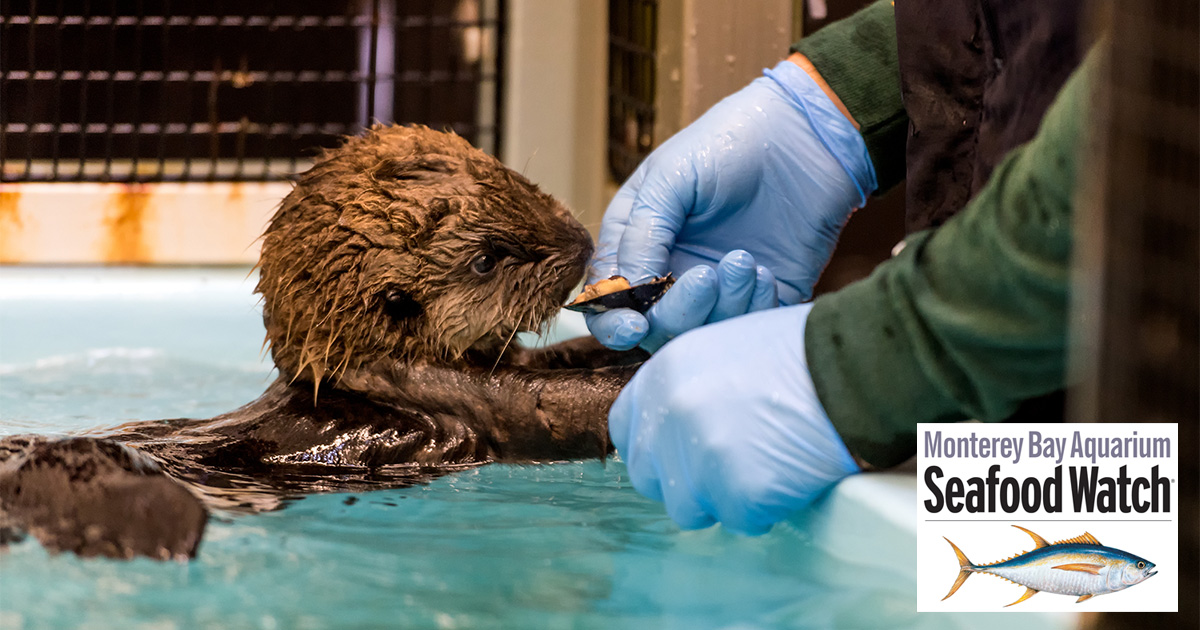Wellness Wednesday with Seafood Watch: Sustainable seafood is for the birds…and otters… and you!
- by bonappetit
We’re inviting some of our trusted nonprofit and Star Chef partners to take over the Bon Appétit blog and share their best tips, recipes, and fun links. This week’s guest curator is the Seafood Watch team from the Monterey Bay Aquarium, with which Bon Appétit has been proud to partner since 2002.
At Seafood Watch we work to provide the best information possible about the seafood you eat — and we make sure to follow our own advice. We take our commitment to sustainable seafood so seriously that we extend it to the animal diets at the Monterey Bay Aquarium. Our animal- food room might even remind some of you of your own kitchens: restaurant-quality shrimp, clams, salmon and more are always on hand. We strive to feed our penguins, otters, sharks and other exhibit animals eco-certified or Seafood Watch Good Alternative (yellow) and Best Choice (green) rated seafood.
You can make the same commitment to sustainable seafood for yourself and your family whether you’re cooking at home or getting take-out (and dining out again hopefully someday soon). No need to aim for perfection: use our free tools to follow these simple steps, and you’ll soon find yourself well along the path to sustainability.
1. Try a Best Choice item
The Seafood Watch Best Choice list includes hundreds of green-rated products. At the grocery store, find one and try it for dinner. Maybe challenge yourself to trying one new Best Choice a week or, if you’re minimizing trips to the store, load up the freezer with your favorite, and play with different preparations.
2. Get to know your current seafood
Seafood products are caught and farmed using different methods around the world — with varying environmental impacts. Visit SeafoodWatch.org to learn more about the impact of the fish you eat most often.
3. Stop buying any items on the Avoid list
Do you have any items with one of our Avoid ratings in your regular meal rotation? If so, make a plan to swap out for a Best Choice.
4. Commit to responsible seafood
If you’ve made it this far, congratulations! The next step is to take the changes you’ve made and commit to them for the long term. Share your new sustainable ways on your social media channels. Also, when the time feels right, talk to businesses you frequent to share — and receive — tips on what they’re doing to make good choices and spread the word.
